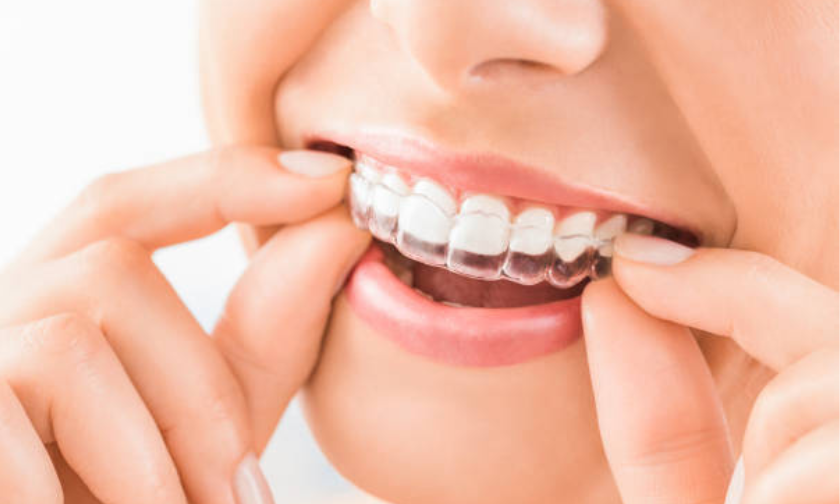Embarking on the journey to straighten your teeth is a significant decision, and once you’ve committed to metal braces, you may wonder if there’s any flexibility in your treatment plan. Perhaps you’re considering switching to clear braces for a more discreet appearance or added comfort. In this comprehensive guide, we’ll delve into the possibility of transitioning from metal braces to clear aligners, exploring the considerations, benefits, and potential challenges associated with such a switch.
Benefits of Metal Braces
1. Effective Correction: Metal braces are renowned for their efficacy in correcting various orthodontic issues, including overcrowding, misalignment, and bite problems.
2. Durability: Metal braces are robust and can withstand the rigors of orthodontic treatment, making them suitable for complex cases.
3. Cost-Effectiveness: In many cases, metal braces are more affordable compared to alternative orthodontic treatments, making them accessible to a broader demographic.
Exploring Clear Braces as an Alternative
Clear braces, also known as ceramic braces, offer a discreet alternative to traditional metal braces. Constructed from transparent or tooth-colored materials, clear braces blend seamlessly with the natural color of your teeth, making them far less noticeable. Many individuals are drawn to clear braces for their aesthetic appeal and the confidence boost they provide during treatment.
Advantages of Clear Braces:
1. Aesthetic Appeal: Clear braces are significantly less conspicuous than their metal counterparts, making them an appealing option for individuals who wish to maintain a more discreet appearance during treatment.
2. Comfort: The ceramic material used in clear braces is typically smoother and less abrasive than metal, reducing the likelihood of irritation to the gums and cheeks.
3. Predictable Results: Like metal braces, clear braces are highly effective in achieving desired orthodontic outcomes, providing patients with straighter, healthier smiles.
Can You Switch from Metal to Clear Braces Mid-Treatment?
One common question among orthodontic patients is whether it’s possible to switch from metal braces to clear braces once treatment has commenced. While every case is unique and ultimately subject to the discretion of your orthodontist, there are several factors to consider when contemplating such a transition.
Considerations Before Switching:
1. Treatment Progress: The stage of your orthodontic treatment plays a crucial role in determining the feasibility of switching to clear braces. If significant progress has already been made with metal braces, your orthodontist may advise against switching, as it could disrupt the treatment plan.
2. Orthodontic Issues: The complexity of your orthodontic issues may influence the viability of switching to clear braces. In cases where precise control of tooth movement is required, metal braces may be deemed more suitable.
3. Patient Compliance: Clear braces require diligent maintenance and care to prevent discoloration or damage. Your orthodontist will assess whether you’re willing to adhere to the necessary guidelines for successful treatment with clear braces.
The Transition Process
Suppose both you and your orthodontist agree that transitioning from metal to clear braces is feasible and beneficial for your treatment. In that case, the process typically involves several steps to ensure a smooth transition and optimal outcomes.
Steps Involved in Transitioning:
1. Assessment: Your orthodontist will conduct a thorough assessment of your current treatment progress and orthodontic needs to determine whether transitioning to clear braces is appropriate.
2. Bracket Removal: If deemed necessary, the metal brackets from your existing braces will be carefully removed, and any adhesive residue will be cleaned from your teeth.
3. Bracket Placement: Clear brackets will be affixed to your teeth using dental cement, following which the wires will be threaded through the brackets to facilitate tooth movement.
4. Adjustments: Your orthodontist will make any necessary adjustments to ensure the clear braces are properly aligned and exerting the correct amount of pressure on your teeth.
5. Monitoring: Regular follow-up appointments will be scheduled to monitor your progress and make any additional adjustments as needed throughout the remainder of your treatment.
Transitioning from metal braces to clear braces mid-treatment is indeed possible in certain cases, offering patients the opportunity to achieve their desired orthodontic outcomes while enjoying the benefits of a more discreet and comfortable treatment option. However, it’s essential to consult with your orthodontist to determine whether such a transition is appropriate for your specific needs and circumstances. By weighing the considerations outlined in this guide and working closely with your orthodontic team, you can make an informed decision that aligns with your goals for a straighter, healthier smile.
